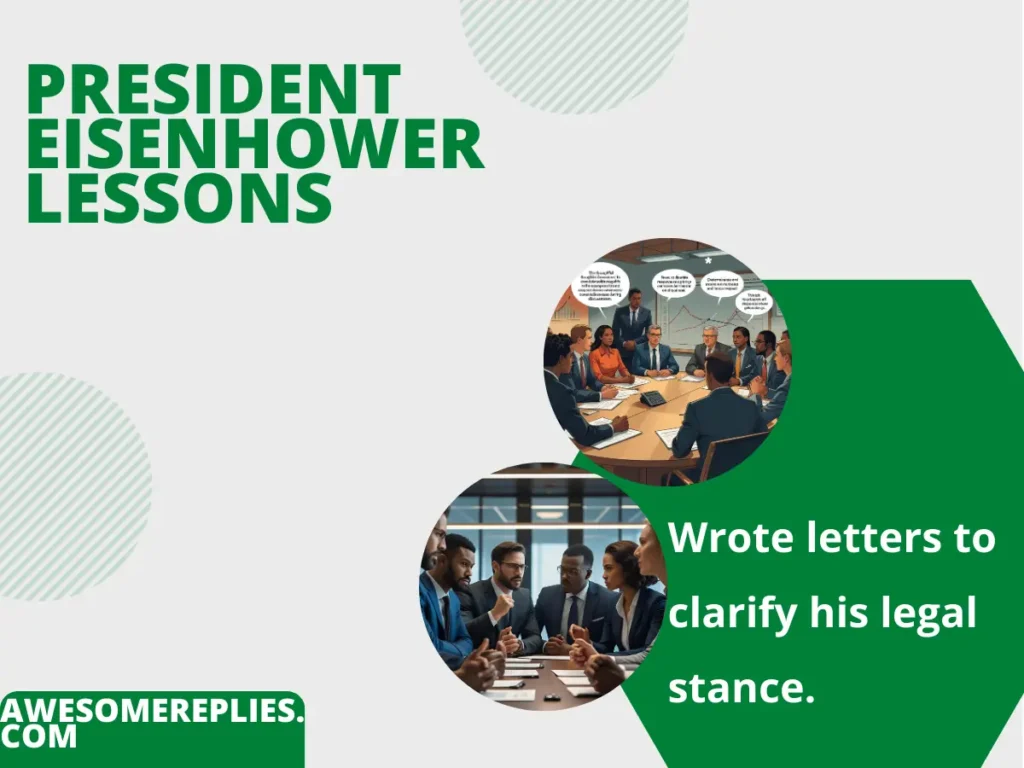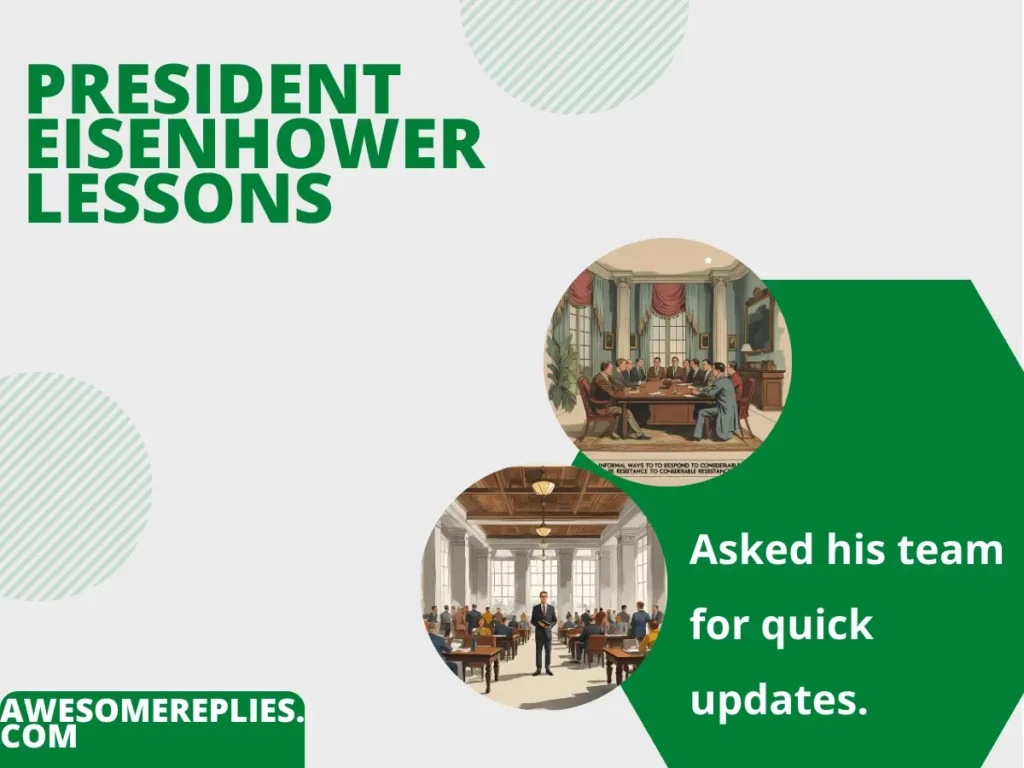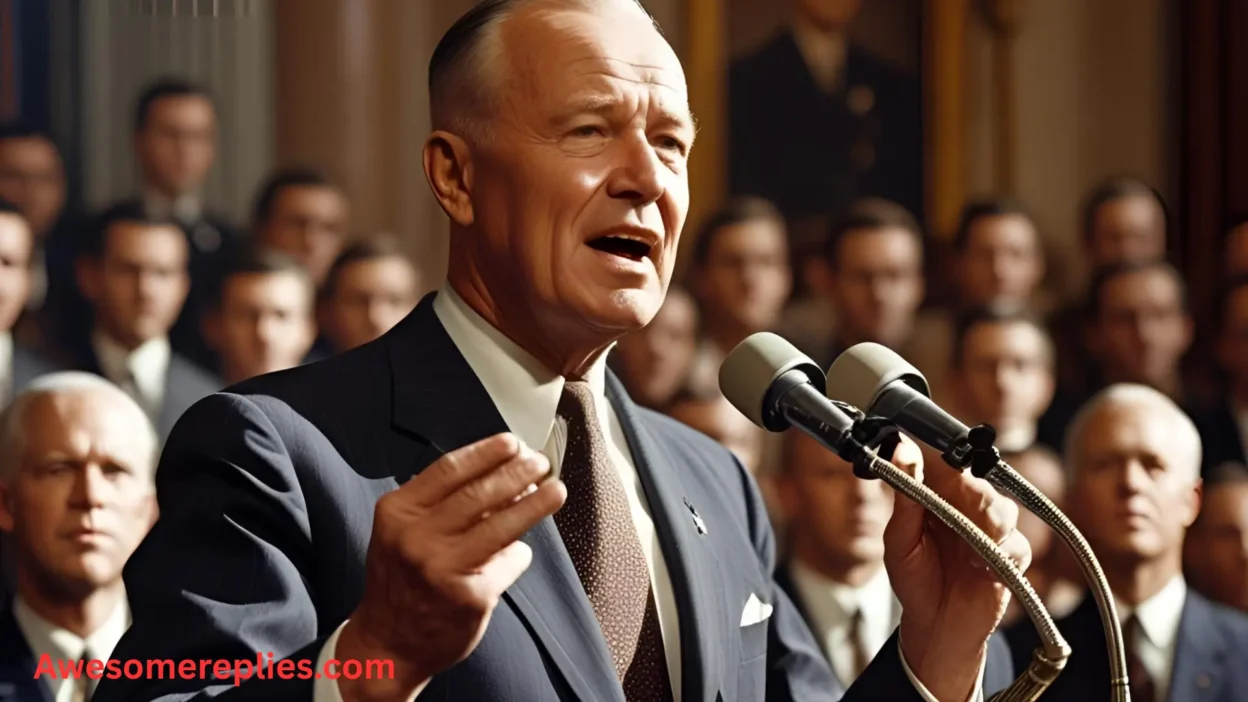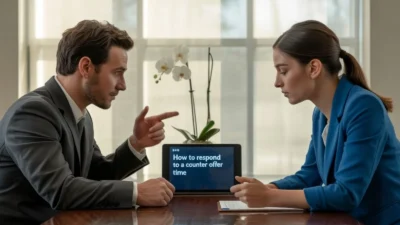Are you searching for clear answers about how President Dwight D. Eisenhower handled the tough resistance in Arkansas during the Little Rock Crisis?
You’re in the right place! This article solves your question with a deep dive into Eisenhower’s actions when Arkansas Governor Orval Faubus and others opposed school integration in 1957.
Different situations called for unique ways to tackle this resistance, from legal orders to military action.
Read on to discover how Eisenhower faced this challenge in formal, informal, creative, and professional ways, all explained simply so anyone can understand!
Formal Ways to Respond to Considerable Resistance

Eisenhower used official and serious actions to address the resistance in Arkansas. Here are 30+ formal ways he responded, showing his commitment to uphold the law.
- Issued Executive Order 10730 to send federal troops.
- Federalized the Arkansas National Guard to take control.
- Sent 1,000 soldiers from the 101st Airborne Division.
- Met Governor Faubus in Newport, Rhode Island, to negotiate.
- Signed a proclamation ordering the mob to disperse.
- Upheld the Supreme Court’s Brown v. Board ruling.
- Ensured federal court orders were followed.
- Directed the Justice Department to monitor the crisis.
- Wrote letters to clarify his legal stance.
- Consulted Attorney General Herbert Brownell for advice.
- Reviewed historical cases like the Whiskey Rebellion.
- Declared mob rule could not override court decisions.
- Authorized military escorts for the Little Rock Nine.
- Placed Arkansas National Guard under federal authority.
- Issued a public statement on September 21, 1957.
- Addressed the nation on TV about the crisis.
- Cited the Constitution to justify his actions.
- Used legal powers under Title 10, Sections 332–334.
- Ordered troops to restore order at Central High.
- Responded to Mayor Mann’s telegram for help.
- Rejected Faubus’s claim of maintaining peace.
- Ensured the safety of African American students.
- Worked with federal judges to enforce desegregation.
- Sent paratroopers to Little Rock on September 24.
- Emphasized federal law over state resistance.
- Coordinated with the Pentagon for troop deployment.
- Monitored mob violence to protect students.
- Upheld equal protection under the law.
- Clarified his duty to enforce court rulings.
- Avoided personal opinions on integration.
- Focused on preventing violence and anarchy.
- Responded to international criticism during the Cold War.
- Ensured troops followed strict orders to maintain peace.
- Reviewed legal options before acting.
- Sent a telegram to Faubus urging compliance.
- Declared the crisis a threat to national credibility.
Best Pick: Issued Executive Order 10730 to send federal troops. This was a bold, official step to enforce the law and protect the Little Rock Nine.
Informal Ways to Respond to Considerable Resistance

Eisenhower also took less formal steps, like talking and planning behind the scenes. These 30+ casual approaches show how he handled things calmly.
- Chatted with advisors to plan next steps.
- Kept cool despite Faubus’s defiance.
- Talked to Faubus face-to-face in Rhode Island.
- Listened to Mayor Mann’s plea for help.
- Watched news reports to stay updated.
- Thought about the crisis during quiet moments.
- Jotted down notes to clear his thoughts.
- Asked his team for quick updates.
- Stayed patient when Faubus broke promises.
- Kept an eye on Little Rock’s mob chaos.
- Talked to military leaders about troop plans.
- Checked in with his press secretary daily.
- Shared his concerns with close aides.
- Looked at telegrams from worried citizens.
- Kept his temper when mobs got violent.
- Spoke plainly in his TV speech.
- Worked with his team to avoid a bigger mess.
- Thought about how the world was watching.
- Stayed calm under political pressure.
- Asked for reports on the students’ safety.
- Kept his focus on keeping peace.
- Listened to both sides of the argument.
- Talked about the crisis with his wife.
- Reflected on his duty as president.
- Kept his words simple to reach everyone.
- Watched how locals reacted to troops.
- Thought about the kids facing the mob.
- Checked with lawyers to stay legal.
- Spoke to reporters to explain his moves.
- Stayed firm but avoided picking fights.
- Asked his team to keep things quiet.
- Thought about America’s image abroad.
- Kept his cool when critics attacked him.
- Planned carefully to avoid more violence.
- Listened to the Little Rock Nine’s story.
Best Pick: Talked to Faubus face-to-face in Rhode Island. This showed Eisenhower trying to solve things calmly before using force.
Idiomatic Ways to Respond to Considerable Resistance
Eisenhower used clever and bold moves, like sayings that pack a punch. These 30+ idiomatic responses show how he tackled resistance with style.
- Took the bull by the horns with federal troops.
- Put his foot down with Executive Order 10730.
- Kept his cool in a hot situation.
- Called Faubus’s bluff in Newport.
- Drew a line in the sand for the law.
- Stepped up to the plate for justice.
- Kept the ball rolling with troop deployment.
- Didn’t beat around the bush with orders.
- Pulled out all the stops to protect students.
- Stood his ground against mob rule.
- Kept his eyes on the prize of equality.
- Threw his weight behind court rulings.
- Cut through the noise with clear actions.
- Took the high road by staying calm.
- Held the line against segregationists.
- Put the pedal to the metal with soldiers.
- Kept his cards close while planning.
- Turned the tables on Faubus’s defiance.
- Stayed cool as a cucumber under pressure.
- Hit the ground running with the 101st Airborne.
- Kept his nose to the grindstone.
- Went the extra mile for the Little Rock Nine.
- Didn’t let the grass grow under his feet.
- Stood tall in the face of chaos.
- Kept a tight ship with military orders.
- Took it one step at a time with talks.
- Didn’t pull any punches with the law.
- Kept his ear to the ground for updates.
- Threw down the gauntlet with troops.
- Stayed as steady as a rock.
- Went all in to enforce desegregation.
- Kept the wolves at bay with soldiers.
- Didn’t let Faubus call the shots.
- Played hardball with federal authority.
- Kept his head above water in the crisis.
Best Pick: Took the bull by the horns with federal troops. This bold move showed Eisenhower wasn’t afraid to act decisively.
Professional Ways to Respond to Considerable Resistance
In his role as president, Eisenhower used professional strategies to handle the crisis. These 30+ workplace-friendly approaches show his leadership.
- Issued a formal executive order to act.
- Coordinated with the Department of Justice.
- Deployed federal troops to ensure safety.
- Federalized the Arkansas National Guard.
- Held a meeting with Governor Faubus.
- Consulted legal advisors for guidance.
- Addressed the nation on television.
- Cited constitutional authority for actions.
- Responded to Mayor Mann’s urgent telegram.
- Monitored the situation through reports.
- Ensured troops followed strict protocols.
- Upheld the Supreme Court’s ruling.
- Worked with military leaders for plans.
- Sent paratroopers to protect students.
- Issued a proclamation to disperse mobs.
- Rejected Faubus’s claims of peace-keeping.
- Focused on federal law enforcement.
- Kept international reputation in mind.
- Reviewed historical legal precedents.
- Clarified his role as chief executive.
- Ensured court orders were enforced.
- Directed the Pentagon to organize troops.
- Avoided personal bias in decisions.
- Kept communication lines open with aides.
- Responded to public concerns calmly.
- Used legal powers under Title 10.
- Monitored mob violence for safety.
- Coordinated with local authorities.
- Emphasized equal protection under law.
- Planned troop movements carefully.
- Addressed global criticism of the crisis.
- Ensured students’ safe entry to school.
- Kept records of all decisions made.
- Worked with advisors to avoid escalation.
- Upheld the Brown v. Board decision.
Best Pick: Deployed federal troops to ensure safety. This professional move protected the Little Rock Nine and upheld the law.
Conclusion
President Dwight D. Eisenhower faced tough resistance in Arkansas with a mix of formal orders, calm talks, bold moves, and professional leadership.
His actions during the Little Rock Crisis of 1957 showed how different situations need different ways to respond, from sending troops to talking it out.
By using these approaches, he upheld the law and protected the Little Rock Nine.
Try using these ideas in your own life—stay calm, act wisely, and stand up for what’s right!



